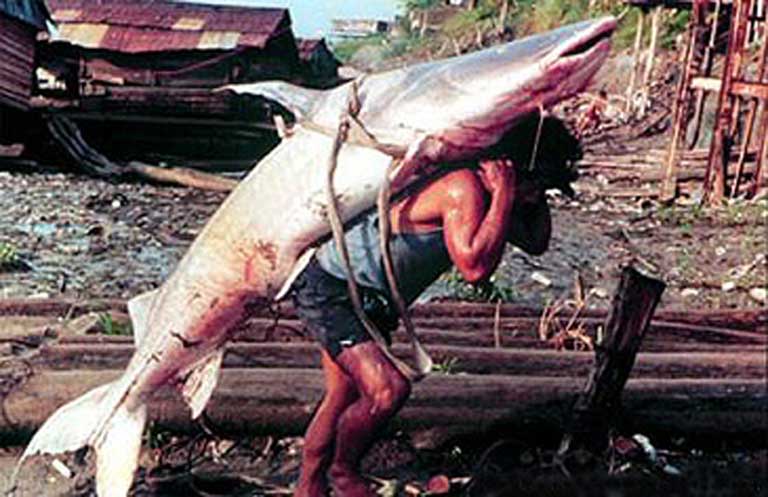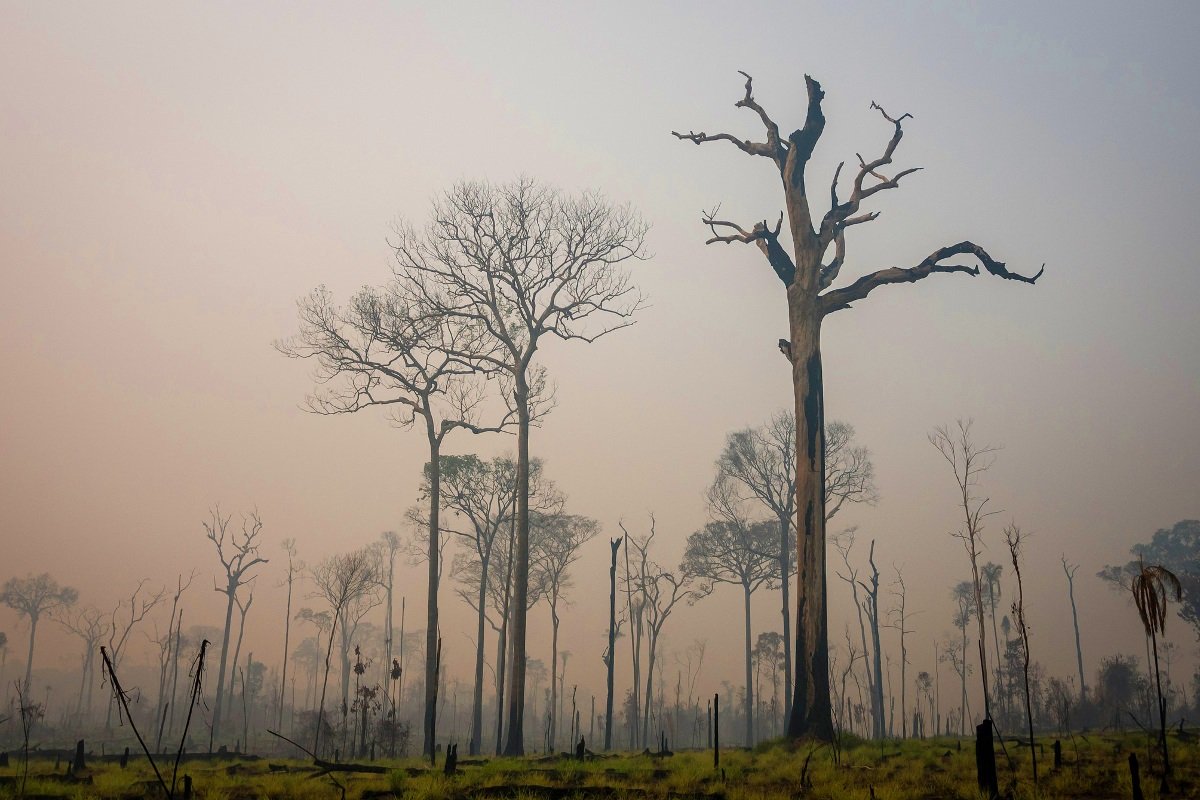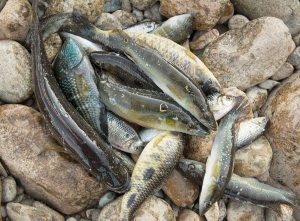More than 400 dams are planned on being built, are being built or have been built in the Amazon Basin. These dams disrupt the impressive migration of Amazonian catfish, a commercially valuable fish and apex predator in the environment.
A singular Amazonian catfish is capable of an amazing feat: hidden from human eyes, the species travels vast distances over its lifetime, making a round trip covering more than 8,000 kilometers (nearly 5,000 miles), to return to its natal breeding grounds, a new study confirms.
But even as this record-setting feat — the longest freshwater migration in the world — is scientifically confirmed, the species is threatened by hundreds of planned Amazonian dams.
Brachyplatystoma rousseauxii is a commercially valuable catfish species and an apex predator, growing to 3 meters (more than 9 feet) long. Understanding the migratory patterns of the fish, whose range spans six Amazonian countries, “is paramount for designing adequate conservation and management strategies, especially in view of the current and proposed hydroelectric development throughout the Amazon basin,” the researchers write in the Journal of Applied Ecology.
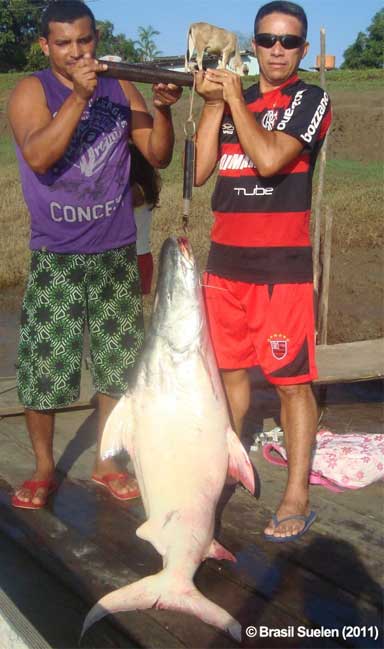
Observations in the 1990s concerning the size distribution of catfish caught along the length of the Amazon River first led researchers to suggest that long-distance homing migration might be taking place, explained study lead author Fabrice Duponchelle of France’s Institute of Research for Development. Subsequent genetic analyses were consistent with that hypothesis, but still didn’t offer definitive proof.
Intrigued by the possibility that catfish might be homing over such vast distances, Duponchelle employed an innovative technique in the new study to get conclusive evidence: chemical analysis of the otolith, a type of ear bone.
As otoliths grow, their chemical composition changes to reflect the background levels of particular chemical elements found in the environment. Like tree rings, the layers of bone relate to their age: the center, innermost layer of otolith is the oldest, and reflects life as a hatchling; the outer edge is the most recent, and reflects the last stage of the fish’s life.
The scientists examined how chemical composition — specifically the ratios of two strontium isotopes — changed from the otolith’s center to its edge. Because strontium levels vary geographically across the Amazon region, it was possible for the research team to match the isotope ratios seen within the bones to their geographic origin in one of three areas: the Amazon River and its Andean and lowland tributaries; the Madeira sub-basin; and tributaries originating on the old, granite Brazilian and Guiana shields. In this way, the lifetime migration patterns of 37 catfish were carefully pieced together.
Adult catfish were sampled from their breeding grounds in the upper Madeira and Amazon rivers. The life histories stored in their bones revealed that — as larvae and juveniles just a few centimeters long — they had drifted downstream, eventually reaching the lower Amazon, with some going as far as the Amazon estuary.
Most returned to their original breeding grounds thousands of miles upstream as adults, particularly within the Madeira sub-basin.
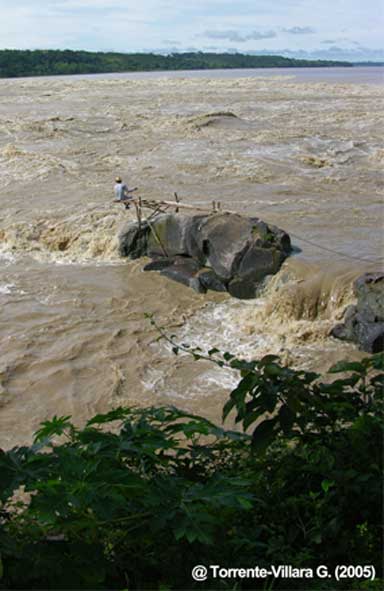
Several of the catfish studied showed alternative movement patterns, however, corresponding to migrations that began in one sub-basin and ended in another. “There are always both homers and strayers” in migratory fish species, Duponchelle told Mongabay — a pattern that helps safeguard the species against extinctions. None of the catfish examined showed evidence of being resident in their natal sub-basin throughout their life, suggesting that the initial downstream migration is a compulsory part of their lifecycle.
The team’s ground-breaking work provides conclusive evidence of the homing behavior shown by B. rousseauxii on its 8,000-kilometer journey. “Such long-distance natal homing is exceptional in purely freshwater fishes,” the researchers state.
The distance covered is “rather exceptional from a global perspective too,” said Herman Wanningen, director of the World Fish Migration Foundation. The catfish can hold its own against long-distance freshwater-saltwater migrants such as sturgeon, salmon and the European eel; the latter covers 10,000 to 12,000 kilometers (6,214 to 7,456 miles) on its journey between the Sargasso Sea and European lakes and rivers.
Unfortunately for the Amazon catfish, the length of its journey makes it especially vulnerable to disruption by the hundreds of hydropower dams slated for construction across the Amazon basin and in the river’s headwaters.
Two major completed hydropower projects on the Madeira River already pose a significant barrier to their migration route, despite mitigation efforts. Although fish passages to aid upstream migration were incorporated into both the Jirau and Santo Antônio dams, these measures have proven ineffective, the researchers write, concluding that “a substantial part of [the catfish’s] possible spawning grounds in the Amazon Basin is already strongly compromised.”
The scientists warn that negative impacts to this top Amazon predator will have knock-on effects along the whole food chain. Researchers call for urgent modifications to proposed, under construction and existing dams to restore connectivity across the migration route.
But even if upstream migration could be restored, a trickier problem is maintaining the downstream movement of the catfish during their very small juvenile stages, Duponchelle said. “These young stages — adapted to migrate downstream in running, highly oxygenated waters — now have to face huge lakes [created by dams], with often poorly oxygenated waters, roamed by predators they did not normally encounter [in the past], such as piranhas, for instance.”
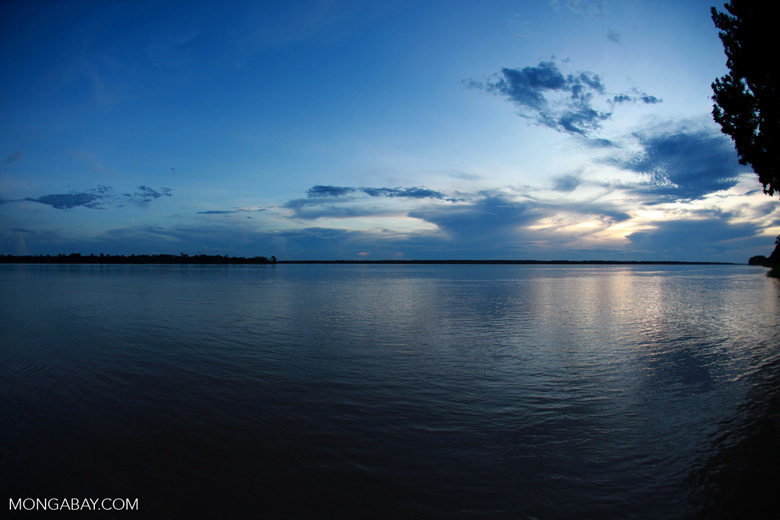
Lessons learned from around the world indicate that dams and migratory species cannot coexist, Wanningen cautioned: “The only way to protect these long distance migrants is to keep certain river systems open for free migration to fulfil their lifecycle.”
“The solution would be to implement river basin planning, where choices are made about which rivers will be kept free flowing and protected, which rivers are restored by removing barriers or where fishways are installed, and which rivers are utilized for energy production/hydropower,” he said.
“This is what should be done first and then new hydropower plants can be built.”
Duponchelle hopes that the new study, when combined with the work of other scientists who have provided evidence of the ecological and social impacts of dams, along with research that identifies better, cheaper and greener energy alternatives to Amazon hydropower will be taken into account before it’s too late.
“Unfortunately,” he concluded, “what happens in the world everywhere suggests than the power of money far exceeds the power of reason.”
– This report was originally published in Mongabay and is republished by an agreement to share content.


